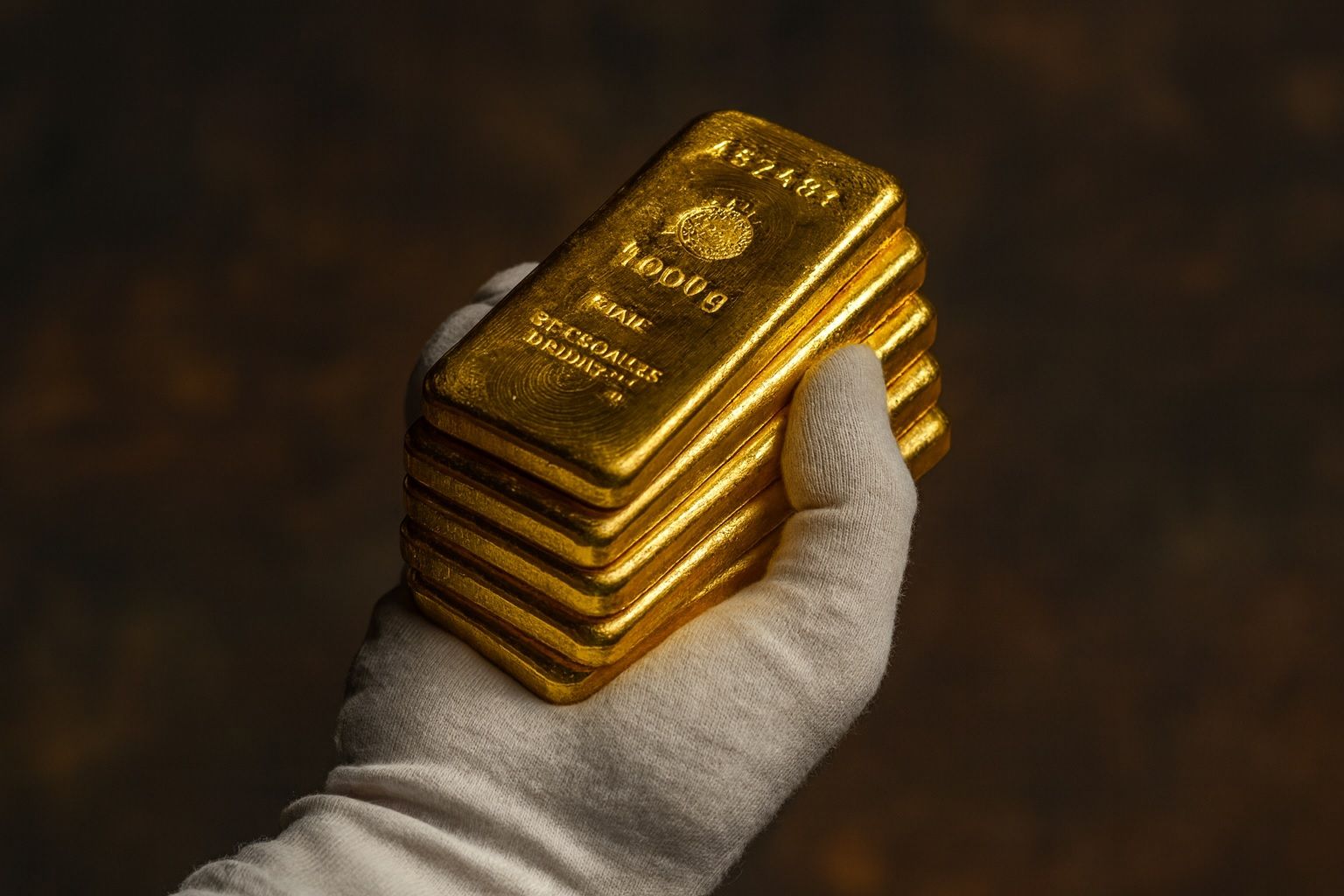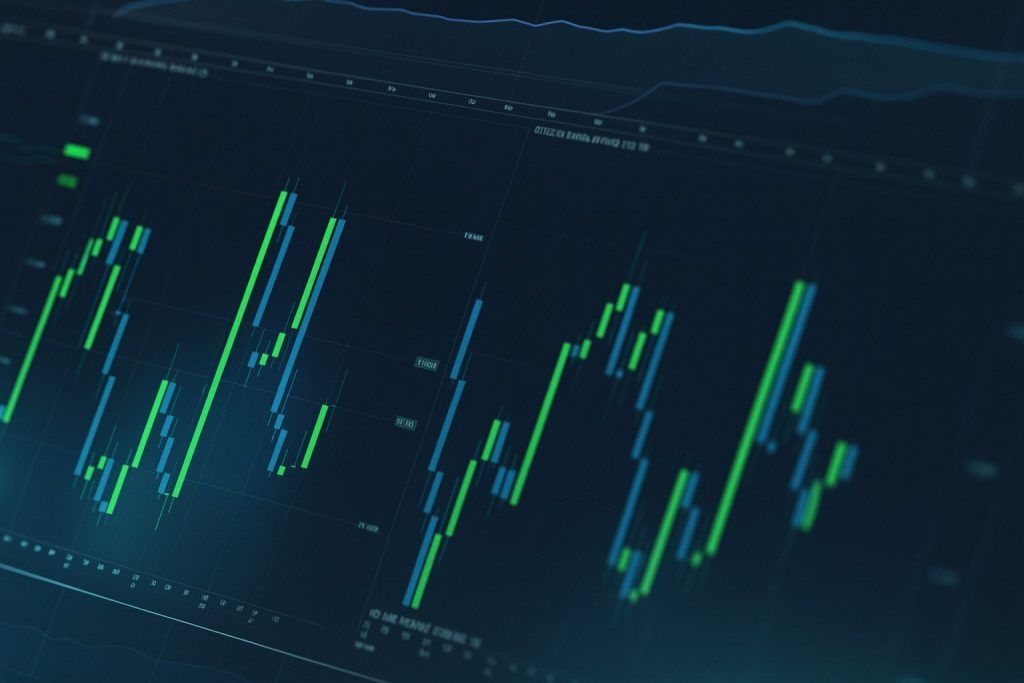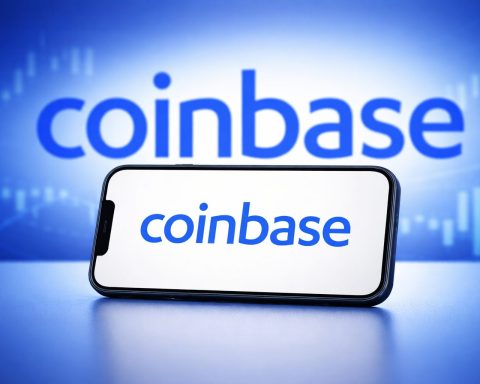- All-Time Highs: Gold prices surged to record levels this week, breaching the $4,300 per ounce mark and even touching about $4,378/oz on Friday before a slight pullback [1]. The metal is up roughly 60%+ in 2025, on track for its best week since 2020 [2]. Silver has soared in tandem, hitting an all-time peak around $53/oz [3], with a year-to-date gain near 70%, far outpacing stocks and even Bitcoin [4].
- Safe-Haven Rush: A flight to safety is driving the rally, as investors seek refuge from multiple risks. Geopolitical tensions – from escalating US–China trade war rhetoric to conflicts in Europe and the Middle East – plus economic uncertainties (like U.S. regional bank jitters and a government shutdown) have spooked markets [5] [6]. Surging inflation and expectations of Federal Reserve rate cuts have weakened the dollar and bolstered gold’s appeal as an inflation hedge [7] [8].
- Fed & Dollar Factor: Traders are now piling into bets on Fed rate cuts by year-end, after Fed officials signaled more easing ahead [9]. Lower interest rates tend to benefit gold since it yields no interest, making it relatively more attractive when bond yields fall [10]. The U.S. dollar index has slipped to ~98, down nearly 10–12% in 2025, which makes dollar-priced gold cheaper for overseas buyers and adds fuel to the metal’s rise [11].
- Big Buyers & Tight Supply: Demand is broad-based. Central banks have been aggressively buying gold, on pace to accumulate around 1,000+ tonnes in 2025 after record purchases in recent years [12]. Major gold-backed ETFs are seeing record inflows, and physical supply is tight. In silver’s case, strong industrial demand (electronics, solar, EVs) plus a squeeze in available supply – exemplified by shortages in London and even an Indian fund halting new silver trades – have amplified the price spike [13] [14].
- Forecasts & Warnings: Many analysts remain bullish. ANZ research just raised its gold target to $4,400 by Dec 2025, with a peak near $4,600 by June 2026 [15]. UBS likewise sees gold around $4,200+ in coming months, and Goldman Sachs predicts ~$4,900 by 2026 if current trends hold [16]. “Mounting concerns around the Fed’s independence, political uncertainty, trade tariffs, geopolitical tensions, and ballooning debts will continue to keep strategic investment interest strong for gold,” noted ANZ’s commodity analysts [17]. However, they and others flag a potential reversal later – ANZ expects gold could “fall big” in H2 2026 once the Fed’s easing cycle ends [18]. And some veterans are downright cautious: author Robert Kiyosaki even warned that “bubbles are about to start busting,” predicting gold, silver (and Bitcoin) might plunge 50% before roaring back [19].
Gold Soars to Record Highs Amid Global Angst
Gold’s price blew past historic milestones this October as anxious investors flocked to safe-haven assets. The metal first breached the $4,000/oz barrier in early October – a level never seen before – and it hasn’t stopped there [20] [21]. By mid-October, bullion was trading in the $4,200+ range, and on Friday (Oct 17) it briefly hit $4,378/oz, marking a fresh record intraday high [22]. Even after a bit of profit-taking, gold is up ~7.6% for the week, putting it on pace for the strongest weekly gain since early 2020 [23].
This stunning rally caps a year of extraordinary growth for gold. The price is now more than 60% higher than at the start of 2025 [24] – an almost unheard-of rise for the precious metal in peacetime. (For context, gold began the year around $2,700–2,800/oz [25].) By comparison, stock markets have risen only modestly this year (the S&P 500 is up around 15% YTD), highlighting how gold has dramatically outperformed most other assets in 2025 [26]. Silver, too, has joined the party – after lagging for years, silver prices exploded from the low $30s in January to over $50 by October, a leap of over 70% year-to-date [27]. Silver traded as high as $53–54/oz this week, notching its own record high and its first break above the 1980 peak (~$50) [28]. The tandem records for gold and silver underscore a sweeping safe-haven frenzy underway in financial markets.
Market experts say the momentum feeding gold’s “extraordinary rally” shows no sign of stopping for now [29]. Bullion has risen more than 5% just since Monday [30], catching even some bulls off guard. “Gold’s strength reflects an extremely positive macroeconomic and geopolitical background for safe-haven assets, plus concerns over other traditional safe havens,” explains Matthew Piggott, director of gold and silver at Metals Focus [31]. In other words, virtually everything that could go right for gold is aligning at once: investors are facing a barrage of threats elsewhere, and gold is shining as a refuge.
Drivers: Fed Easing Bets, Inflation & Weak Dollar
One of the biggest catalysts behind gold’s moonshot is the expectation of easier monetary policy ahead. Traders have increasingly bet that the U.S. Federal Reserve will cut interest rates in the coming months – in fact, markets are pricing in at least two more quarter-point rate reductions by year-end 2025 [32]. Just this week, Fed Chair Jerome Powell signaled that the central bank is on track for another 0.25% cut at its late-October meeting [33]. The prospect of falling rates is music to gold’s ears: lower borrowing costs boost the appeal of non-yielding assets like gold, since cash and bonds become less attractive in comparison [34].
At the same time, inflation has remained stubbornly high in many regions, keeping real interest rates low or negative. Investors alarmed by persistent inflation and huge government deficits are turning to gold as a hedge [35]. The phenomenon has been dubbed the “debasement trade,” where market participants shun sovereign debt and currencies to protect against the erosion of value [36]. The U.S. dollar’s slide in 2025 has further turbocharged the trend – the Dollar Index has fallen roughly 10-12% this year, hitting its weakest levels in about a year [37]. A cheaper dollar directly lifts dollar-priced gold, making it more affordable for buyers in Europe, Asia and elsewhere [38]. “The dollar’s decline has been a tailwind for gold – and it’s not a coincidence gold is soaring while the dollar is slipping,” noted one analyst on the relationship [39]. Indeed, as of this week the dollar was near a 10-day low and heading for a weekly loss as rate-cut expectations and risk fears undercut the greenback [40] [41].
Geopolitical Tensions and Credit Fears Spur Safe-Haven Demand
Beyond the macroeconomics, mounting geopolitical and financial risks have sent investors racing into safe havens like gold. Perhaps most prominently, U.S.–China tensions have flared anew, threatening global stability. Just days ago, President Donald Trump declared that the United States is now “locked in a trade war” with China, after a series of tit-for-tat economic measures [42]. In an Oct. 10 bombshell, Trump even threatened to slap a 100% tariff on all Chinese imports, a drastic escalation that stunned markets [43]. Fears that this superpower clash could undermine global growth for years have significantly boosted gold’s haven appeal [44]. Beijing and Washington continue to spar on multiple fronts – for instance, China this week accused the U.S. of “stoking panic” over Chinese export controls on rare-earth metals [45] – keeping trade anxieties high.
Meanwhile, signs of strain in the banking sector are amplifying investors’ anxiety. In the U.S., a couple of regional banks jolted markets with bad news: Zions Bancorp sank 13% after revealing a $50 million loan loss, and Western Alliance’s stock plunged 11% amid a fraud lawsuit and broader loan worries [46]. “While the issues of the two lenders seem well contained, where there is smoke there is often fire,” remarked Tony Sycamore of IG Markets, warning of a potential “tinderbox for another banking flare-up” if underlying problems spread [47]. These credit red flags pummelled U.S. bank stocks and even knocked the U.S. dollar (boosting the yen and Swiss franc) as investors fled to safety [48] [49]. In fact, bond prices have been climbing (yields falling) on a flight to quality, with the 2-year Treasury yield hitting its lowest level in three years this week [50] [51]. All of this has driven even more cash toward gold and silver, classic safe-haven assets in times of stress.
Other political and security threats are adding fuel to the fire. The U.S. just went through a tense government shutdown standoff in early October, highlighting deep political gridlock and fiscal worries – another factor that “aided bullion,” according to market observers [52]. Ongoing wars and conflicts – from the war in Ukraine to turmoil in the Middle East – have kept global uncertainty at a boil, further underlining gold’s role as a crisis hedge [53]. It’s a perfect storm of fear and uncertainty. As analysts at ANZ put it, investors are willing to pay a premium to diversify their portfolio risk, with gold remaining both a “risk diversifier and strategic asset” in such an environment [54].
Silver’s Record Surge and Other Havens
Silver has often been called “gold’s little sister,” and it lived up to that reputation by skyrocketing alongside gold this year – arguably even more dramatically. This week, silver prices punched through their long-standing ceiling around $50. The metal hit roughly $51.2/oz on October 8 [55] and kept climbing to about $53-54/oz by mid-October, an all-time high above the 1980 Hunt Brothers spike. As of Thursday, silver was holding near $53 after its record-setting run [56]. On a percentage basis, silver’s ~70% year-to-date gain has far outpaced gold’s ~60% rise [57], owing to silver’s smaller market and higher volatility. This has brought the gold/silver price ratio (the number of silver ounces equal in value to one ounce of gold) down to around 80, a much tighter spread that signals silver catching up after years of underperformance [58].
What’s driving silver’s supercharged move? Partly the same safe-haven demand that’s boosting gold – investors tend to buy both in times of turmoil. But silver also has a strong industrial demand component. It’s used heavily in electronics, solar panels, electric vehicles, and other technologies, so an improving economic outlook or supply bottlenecks can spur silver buying on fundamentals [59]. Analysts note that silver’s supply-demand balance was already tight, and now a scramble for physical metal is underway. Liquidity in London’s silver market has dried up to the point that global buyers are hunting for any available supply [60]. In one striking example, India’s Kotak Mahindra asset management halted new investments into its silver ETF because it couldn’t source enough physical silver [61]. This shortage dynamic means even small surges in demand lead to outsized price jumps – hence silver’s eye-popping spike once $50 was breached.
Other traditional havens have seen interest too: the Japanese yen and Swiss franc strengthened this week on the banking fears [62], and government bonds globally have rallied for weeks. Even Bitcoin – often dubbed “digital gold” – hit its own record around $125,000 in early October amid the broader flight to safety, though it subsequently swung wildly on news events [63] [64]. Still, gold and silver remain the go-to safe assets for many investors, given their tangible nature and long track record. As veteran strategist Ross Norman observed regarding silver, there are “pretty solid fundamentals” underpinning these moves, not just frothy speculation [65]. That confidence in fundamentals is keeping many bulls in the precious metals camp despite the rapid rise.
Big Buyers: Central Banks and Investors Pile In
Another pillar supporting gold’s ascent is massive demand from central banks and institutional investors. In recent years, central banks around the world have been on a gold-buying spree unprecedented in modern times. Nations like China, India, Turkey, and Poland have been voraciously accumulating gold reserves to diversify away from the dollar and strengthen their financial stability [66]. In both 2022 and 2024, central banks collectively purchased a record 1,136 tonnes of gold – and 2025 is on track to see similarly hefty buying [67]. Analysts at TS².tech note that central banks are “hoovering up gold” and could top 1,000+ tonnes in purchases this year as well [68]. This official sector demand provides a strong floor under the gold price, as these buyers are price-insensitive and tend to hold for the long term.
Investors large and small are joining in. Gold exchange-traded funds (ETFs) have seen record inflows in recent months [69]. The World Gold Council reported that September 2025 saw the biggest monthly inflows ever into gold ETFs [70], as everyone from hedge funds to retail investors sought exposure to the rally. The largest gold ETF (GLD) is now up roughly 50% year-to-date, reflecting the underlying price surge [71]. Gold mining stocks have also skyrocketed – for example, Barrick Gold shares jumped to multi-year highs alongside bullion’s climb [72]. With gold mining companies’ profits leveraged to gold prices, mining indices and funds have far outperformed the broader market (some leveraged mining ETFs have exploded 700%+ in 2025!) [73].
In the futures markets, there are signs of extraordinary activity as well. The Shanghai Gold Exchange now accounts for about 40% of global gold futures open interest, signaling a shift of influence toward China [74]. And in New York, gold and silver futures are trading at near parity with spot prices – a sign that physical supply is tight and immediate demand is strong. All these indicators point to a broad-based rush into precious metals by institutions, governments, and individuals alike. As one market minute report put it, this is a “historic rally” reflecting a profound shift in investor sentiment toward tangible assets amid an era of volatility and uncertainty [75] [76].
How High Can It Go? Outlook for 2025–26
With gold and silver at uncharted heights, the natural question is: what next? Many analysts argue that the rally still has room to run, at least in the near term. ANZ Bank’s commodity team said this week that gold’s “extraordinary rally” isn’t over yet [77]. Citing supportive factors like rate cuts and haven demand, ANZ raised its year-end 2025 gold forecast to $4,400/oz, up from a prior target in the $4,000 range [78]. They also project gold could reach about $4,600 by June 2026 at its peak, given the current trajectory [79]. Other big-name forecasters concur: UBS analysts see gold reaching ~$4,200 in the coming months (a level essentially achieved this week) [80]. Goldman Sachs has been extremely bullish, reportedly lifting its 12- to 18-month gold price target to around $4,900 per ounce [81]. In a scenario where the Federal Reserve pivots decisively and investors lose faith in the dollar, some at Goldman even suggest $5,000+ gold is possible [82]. For silver, ANZ forecasts a rise to about $57.50/oz by mid-2026 (up from ~$53 now) [83], which would be another ~8% gain and a new record for the metal.
Key drivers behind these optimistic forecasts include ongoing low real interest rates, continued central-bank buying, and the likelihood that political/economic tensions will persist into 2024. As ANZ noted, concerns about the Fed’s independence, political uncertainty, trade tariffs, geopolitical conflicts, and ballooning debts are all likely to keep demand for gold strong in the medium term [84]. In essence, the forces that propelled gold to this record are structural and not easily resolved overnight. “Investors are willing to pay a higher premium to diversify their portfolio risk, with gold remaining both a risk diversifier and strategic asset,” the ANZ analysts wrote in their note [85], encapsulating the bullish view.
That said, not everyone believes the only way is up. The very same ANZ team cautions that by late 2026, the tide could turn. They predict that once the Fed has fully enacted its easing cycle and perhaps starts thinking about tightening again, gold could see a significant pullback [86]. In fact, the Economic Times reports ANZ’s view that gold prices might “fall big in the second half of 2026” as the supporting monetary conditions fade [87]. Essentially, if interest rates start rising again or the economy stabilizes, some of gold’s shine could dull. There are also more dire warnings from market watchers who see potential bubbles. Robert Kiyosaki, the famous author of Rich Dad Poor Dad, delivered one of the starkest takes: he recently warned that “bubbles are about to start busting” across markets and predicted that gold, silver, and even Bitcoin could crater by up to 50% before eventually recovering [88]. Similarly, some contrarians point out that rapid, speculative inflows can reverse quickly; if peace breaks out or inflation truly comes under control, gold could lose some of its allure in the short term.
So, will gold hit $5,000 – or hit a wall? In the near term, most signs point upward, but the journey may be volatile. Even bulls acknowledge the possibility of interim corrections. Many see any pullbacks as buying opportunities rather than end-of-rally signals, given the strong foundational demand. What’s clear is that gold and silver have reclaimed center stage in global markets as symbols of safety. As long as economic and political storm clouds linger, the incentive to hold a little more “real money” (as gold bugs call it) is likely to remain [89] [90]. In the words of one market strategist, “uncertainty underpins these rallies” [91] – and uncertainty, for now, is plentiful. Investors and central banks alike are betting that these precious metals will keep their luster in the turbulent times ahead, even as they keep one eye on the exit in case the winds shift.
References
1. www.devdiscourse.com, 2. www.devdiscourse.com, 3. www.moneyweb.co.za, 4. ts2.tech, 5. www.moneyweb.co.za, 6. www.devdiscourse.com, 7. ts2.tech, 8. www.moneyweb.co.za, 9. www.moneyweb.co.za, 10. www.moneyweb.co.za, 11. markets.financialcontent.com, 12. ts2.tech, 13. www.moneyweb.co.za, 14. ts2.tech, 15. www.moneyweb.co.za, 16. ts2.tech, 17. www.moneyweb.co.za, 18. economictimes.indiatimes.com, 19. ts2.tech, 20. www.reuters.com, 21. ts2.tech, 22. www.devdiscourse.com, 23. www.devdiscourse.com, 24. economictimes.indiatimes.com, 25. ts2.tech, 26. ts2.tech, 27. ts2.tech, 28. www.moneyweb.co.za, 29. www.moneyweb.co.za, 30. www.moneyweb.co.za, 31. www.reuters.com, 32. www.devdiscourse.com, 33. www.moneyweb.co.za, 34. www.moneyweb.co.za, 35. markets.financialcontent.com, 36. www.moneyweb.co.za, 37. markets.financialcontent.com, 38. markets.financialcontent.com, 39. ts2.tech, 40. www.devdiscourse.com, 41. www.devdiscourse.com, 42. www.moneyweb.co.za, 43. ts2.tech, 44. www.moneyweb.co.za, 45. www.devdiscourse.com, 46. www.devdiscourse.com, 47. www.devdiscourse.com, 48. www.devdiscourse.com, 49. www.devdiscourse.com, 50. www.devdiscourse.com, 51. www.devdiscourse.com, 52. www.moneyweb.co.za, 53. ts2.tech, 54. www.moneyweb.co.za, 55. ts2.tech, 56. www.moneyweb.co.za, 57. ts2.tech, 58. ts2.tech, 59. ts2.tech, 60. www.moneyweb.co.za, 61. ts2.tech, 62. www.devdiscourse.com, 63. ts2.tech, 64. ts2.tech, 65. ts2.tech, 66. markets.financialcontent.com, 67. markets.financialcontent.com, 68. ts2.tech, 69. markets.financialcontent.com, 70. markets.financialcontent.com, 71. ts2.tech, 72. ts2.tech, 73. ts2.tech, 74. markets.financialcontent.com, 75. markets.financialcontent.com, 76. markets.financialcontent.com, 77. www.moneyweb.co.za, 78. www.moneyweb.co.za, 79. www.moneyweb.co.za, 80. ts2.tech, 81. ts2.tech, 82. ts2.tech, 83. economictimes.indiatimes.com, 84. www.moneyweb.co.za, 85. www.moneyweb.co.za, 86. economictimes.indiatimes.com, 87. economictimes.indiatimes.com, 88. ts2.tech, 89. ts2.tech, 90. www.moneyweb.co.za, 91. ts2.tech










